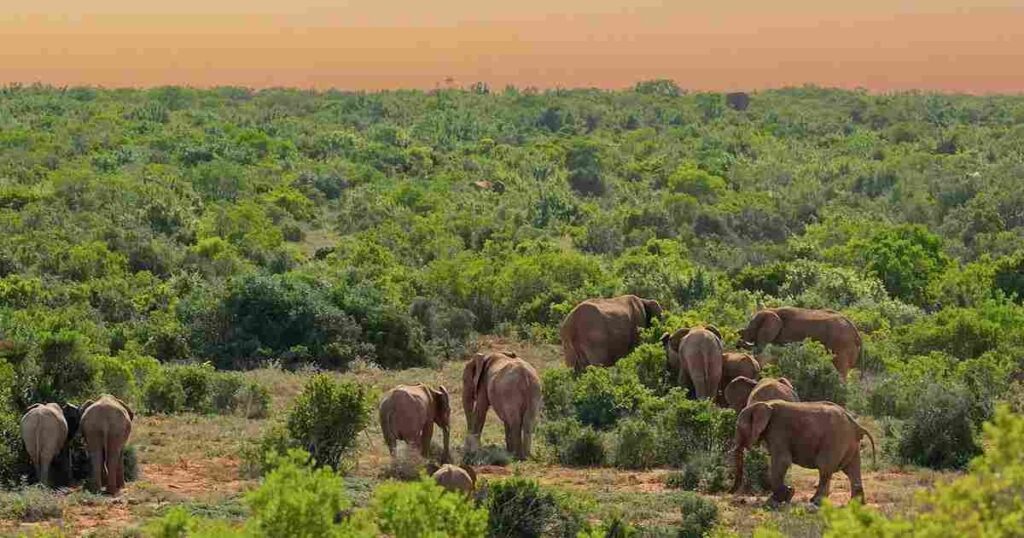At a Glance
- Addo launches major restoration of the iconic Hapoor Dam.
- The new concrete structure will offer safer, more reliable water access for wildlife.
- Original dam to be rehabilitated as SANParks upgrades park infrastructure.
Addo Elephant National Park, one of South Africa’s busiest wildlife destinations, has begun a major restoration of the Hapoor Dam as part of a wider push to secure long-term water access for its animals.
The landmark waterhole, known for close-up elephant sightings, has deteriorated in recent years as shifting ground conditions made it harder—and in some cases unsafe—for smaller species to reach the water.
Park officials say they have seen growing pressure on water sources as visitor numbers rise and weather patterns shift across the Eastern Cape.
Hapoor Dam, once a dependable gathering point for elephants, buffalo and antelope, has needed reinforcement for years.
The current upgrade marks the park’s most significant water-related investment in more than a decade.
For many travelers, Hapoor is one of Addo’s defining stops, a place where families wait patiently to watch breeding herds gather at sunset.
That popularity, combined with environmental strain, has pushed SANParks to fast-track a more sustainable solution.
The overhaul forms part of a broader strategy to modernize infrastructure while preserving the natural character of South Africa’s protected areas.

SANParks confirmed that work is underway on a new concrete dam positioned across from the existing waterhole.
The structure—about 45 by 30 meters and two meters deep—is engineered to provide consistent access to water, especially during the driest months when wildlife numbers cluster around key sources.
Officials say the design will make the area safer for smaller animals often crowded out at traditional clay dams.
A new dam for a changing landscape
Once construction is completed, the original clay-based Hapoor Dam will be fenced off and rehabilitated, allowing the ground to settle and vegetation to recover naturally.
The project is expected to take several months, and visitors may experience temporary detours or limited access around the Addo Main Camp viewing loops.
SANParks notes that these disruptions will be short-lived, adding that improved infrastructure will support ecological stability for decades.

A landmark with deep roots
Hapoor Dam was named for the famed bull elephant “Hapoor,” a dominant figure in Addo’s history whose legacy remains woven into the park’s identity.
Officials say restoring the site is not only about protecting wildlife but also about preserving a place that holds cultural and emotional value for generations of South Africans.
They add that the project reflects SANParks’ ongoing efforts to ensure Addo continues to offer one of the country’s most memorable wildlife experiences—where conservation and tourism work hand in hand.





